In this article, we’ll explore the role solar farms play in reshaping our energy landscape. Discover how these farms are cultivating a brighter, cleaner, and more sustainable tomorrow for us all.

What is a Solar Farm
A solar farm, also known as a solar power station or solar park, is a large-scale facility that generates electricity by harnessing the power of sunlight using photovoltaic (PV) panels. So, they consist of a vast array of solar panels installed on the ground, typically in rural or open areas, to capture sunlight and convert it into electrical energy.
How Does a Solar Farm Work?
A solar farm works by harnessing sunlight and converting it into electricity through the use of photovoltaic (PV) technology. The process involves several key components and steps:
- Solar Panels: The core of a solar farm is the solar panels. These panels consist of photovoltaic cells made from semiconductor materials, typically silicon. Then, when exposed to sunlight, these cells generate an electric current through the photovoltaic effect.
- Sunlight Capture: Solar panels are strategically placed to capture sunlight effectively. The angle and orientation of the panels are often optimized to maximize the exposure to sunlight throughout the day.
- Photovoltaic Cells: When sunlight strikes the photovoltaic cells within the solar panels, it excites electrons in the semiconductor material. So, this creates an electric current, generating direct current (DC) electricity.
- Inverters: They receive the generated DC electricity and convert it into alternating current (AC). AC is the standard form of electricity that homes and businesses use.
- Electrical Grid Connection: The converted AC electricity is fed into the electrical grid through transformers and substations. These facilities help manage the voltage and ensure that the electricity generated by the solar farm is compatible with the larger power grid.
- Power Distribution: The solar farm produces electricity and distributes it through the power grid to homes, businesses, and industries. So, it becomes part of the overall electricity supply for the local or regional area.
- Net Metering (Optional): In some cases, they may use net metering. This system allows excess electricity generated during sunny periods to be fed back into the grid, earning credits for the solar farm owner. Then, during periods of low sunlight or at night, the solar farm can draw electricity from the grid.
- Monitoring and Maintenance: They have monitoring systems to track the performance of individual panels and the overall system. Regular maintenance ensures the optimal functioning of the solar panels and associated equipment.
The entire process is based on the principle of converting sunlight into usable electrical energy through the photovoltaic effect. Solar farms contribute to sustainable energy production, reducing reliance on non-renewable energy sources and mitigating environmental impact.
Types of Solar Farms
There are various types of them, each designed to suit different needs and conditions. The choice of solar farm type depends on factors such as location, available space, environmental considerations, and the specific goals of the solar project. Here are some common types:
| Type | Description | Application |
| Utility-Scale Solar Farms | Large-scale solar farms designed to generate electricity for the utility grid. These projects can cover vast areas and produce significant amounts of power for distribution to residential, commercial, and industrial users. | Utility-scale solar farms are often built in open, rural areas where land is readily available. |
| Commercial and Industrial Solar Farms | Solar installations designed to meet the energy needs of commercial and industrial facilities. Also, they can be integrated into the infrastructure of businesses or industries. | These solar farms are commonly found on the rooftops of large commercial buildings or the grounds of industrial complexes. |
| Community Solar Farms | Solar projects designed to provide clean energy to local communities. Multiple individuals or businesses may invest in or subscribe to a community solar farm, sharing the benefits of the generated electricity. | Community solar farms are often established in areas where individuals may not have suitable rooftop space for solar panels, allowing them to participate in solar energy initiatives. |
| Floating Solar Farms | Solar panels installed on bodies of water, such as ponds, lakes, or reservoirs. So, floating solar farms have the advantage of conserving land space and reducing water evaporation. | Particularly useful in areas where land availability is limited or expensive, floating solar farms are increasingly being implemented as an innovative solar solution. |
| Agrovoltaics or Solar Agriculture | Integration of solar panels into agricultural settings, allowing for dual land use by combining solar energy generation with agricultural activities. | Agrovoltaics can be implemented in agricultural fields, orchards, or pasturelands, providing an additional income source for farmers. |
| Off-Grid Solar Farms | Solar installations designed to operate independently of the main utility grid. These projects often incorporate energy storage solutions, such as batteries, to store excess energy for use during periods of low sunlight. | Off-grid solar farms are common in remote areas where grid access is limited or unreliable. Also, they can be used for specific applications like powering rural clinics or telecommunications infrastructure. |
| Hybrid Solar Farms | Solar installations combined with other renewable energy sources, such as wind or energy storage systems, to provide a more reliable and consistent power output. | Hybrid solar farms are designed to optimize energy production by leveraging multiple renewable resources, ensuring a stable energy supply. |
The choice of a particular type of solar farm depends on the project’s objectives, available resources, and the specific conditions of the site.
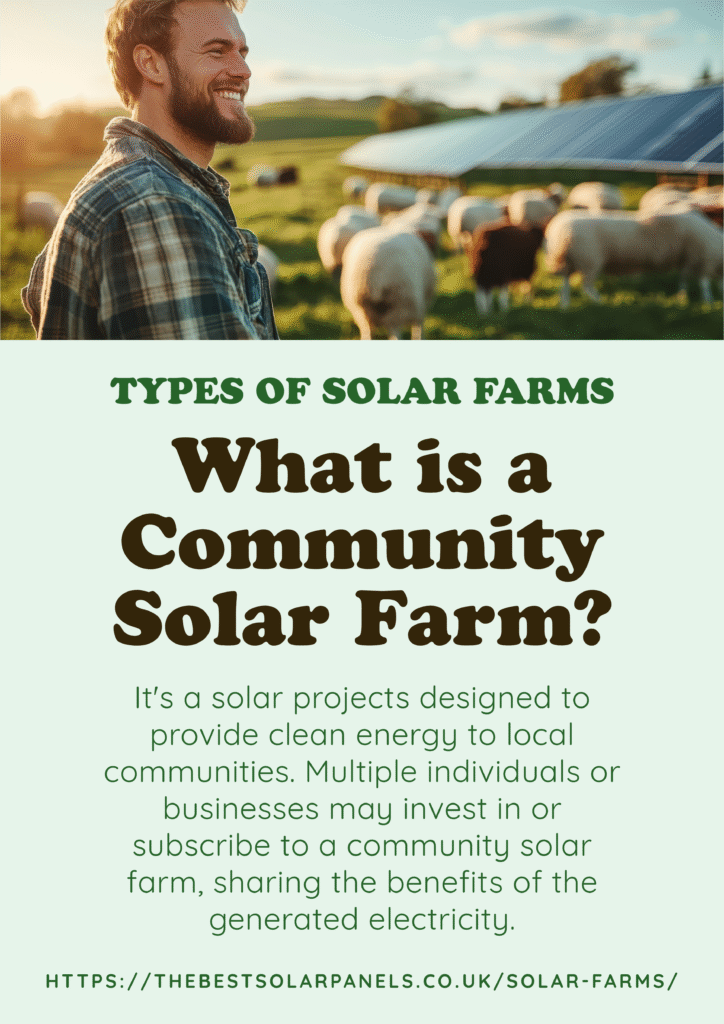
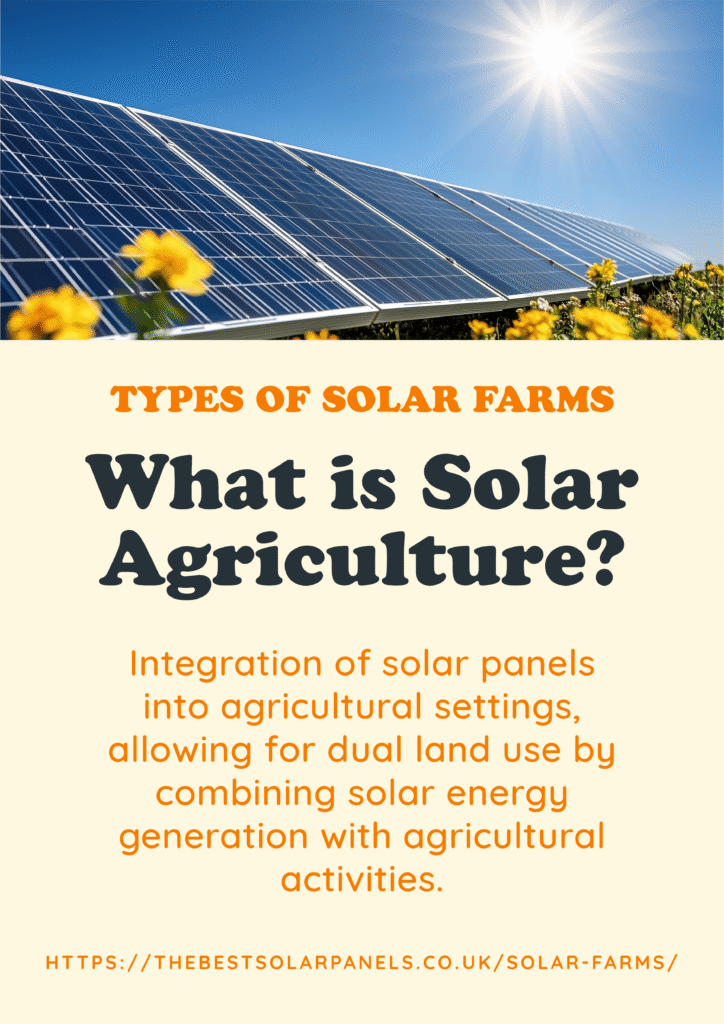
Pros and cons of Solar Farms
Solar farms, like any energy generation method, have both advantages and disadvantages. Here are some of the key pros and cons of them:
Pros
Cons
Advantages explained
- Renewable Energy Source: They harness sunlight, a renewable and virtually inexhaustible energy source, contributing to a sustainable and environmentally friendly energy supply.
- Low Environmental Impact: Solar power generation has a minimal environmental impact compared to fossil fuel-based energy sources. It produces no greenhouse gas emissions or air pollutants during operation.
- Reduced Dependence on Fossil Fuels: Solar farms help reduce dependence on non-renewable fossil fuels, contributing to energy diversification and mitigating the impact of climate change.
- Job Creation: The development, construction, and maintenance of solar farms create jobs, fostering economic growth in local communities.
- Energy Independence: Solar energy reduces dependence on foreign energy sources, enhancing energy security for countries and regions.
- Reduced Transmission Losses: Solar farms can be located closer to energy consumers, reducing transmission losses associated with transporting electricity over long distances.
- Modularity and Scalability: They are modular and scalable, allowing for flexibility in design and expansion based on energy demand.
- Technological Advancements: Ongoing advancements in solar technology, efficiency improvements, and cost reductions make solar farms increasingly competitive and accessible.
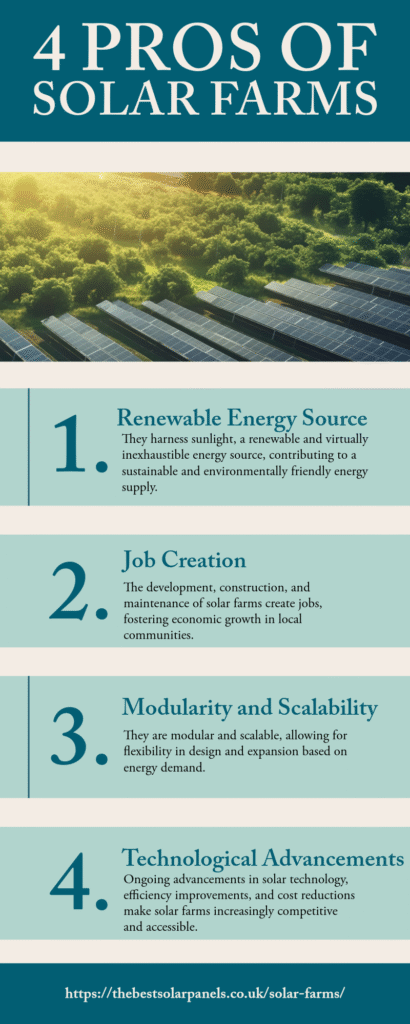
Disadvantages explained
- Intermittency and Weather Dependency: Solar energy production is dependent on sunlight, making it intermittent and weather-sensitive. Energy generation decreases during cloudy days or nighttime.
- Land Use Concerns: Large-scale solar farms may require significant land area, raising concerns about habitat disruption, agricultural land use, and visual impact.
- Resource Intensive Manufacturing: The production of solar panels involves mining, refining, and manufacturing processes that require raw materials and energy, contributing to environmental impact.
- Energy Storage Challenges: To address intermittency, solar farms may require energy storage solutions, such as batteries, which can be expensive and have environmental implications.
- Aesthetic Impact: Many people may consider solar farms visually unappealing, negatively impacting the surrounding landscape’s aesthetics.
- Initial Cost: Although the cost of solar panels has decreased over the years, the initial capital investment required to establish solar farms can still be relatively high.
- Land Use Competition: Large solar farms may compete with other land uses, such as agriculture or natural habitats, potentially leading to conflicts over land use.
- End-of-Life Considerations: Solar panels have a lifespan, and their disposal poses challenges related to recycling and environmental impact.

Utility Solar vs. Community Solar
Utility solar and community solar are both approaches to harnessing solar energy, but they differ in their scale, ownership, and distribution of benefits. Here’s a comparison between utility solar and community solar:
| Utility Solar | Community Solar | |
| Scale | They are large installations designed to generate electricity for the utility grid. These projects can cover vast areas and produce significant amounts of power. | They are smaller-scale installations designed to provide electricity to a local community or group of subscribers. |
| Ownership | They are typically owned and operated by utility companies or large energy developers. These entities sell the generated electricity to the grid, and it becomes part of the overall energy supply for a region. | Community solar projects can have various ownership structures. A local community, a group of individuals, or a third-party developer may own them. Some community solar projects are owned by a utility company but are designed to benefit specific communities. |
| Beneficiaries | They are typically owned and operated by utility companies or large energy developers. These entities sell the generated electricity to the grid, and it becomes part of the overall energy supply for a region. | The primary beneficiaries of community solar projects are the local community members or subscribers who receive the generated electricity. This allows individuals who may not have suitable rooftops for solar panels to participate in and benefit from solar energy. |
| Location | Utility-scale solar farms are often located in rural or open areas with ample sunlight and available land. They may be distant from the end-users of the electricity. | Community solar projects can be located in various settings, including rooftops, open spaces, or even brownfield sites within or near communities. The proximity to end-users is a key aspect of community solar. |
| Investment | Investment in utility-scale solar projects typically comes from utility companies, large corporations, or institutional investors. These entities have the financial capacity to develop and manage large-scale installations. | Investment in community solar projects can come from community members, local governments, or third-party developers. It often involves a more distributed ownership model, allowing individuals to invest in or subscribe to the solar project. |
| Access to Solar Benefits | Provides broad access to solar benefits but may not directly involve individual consumers in the ownership or benefits of the project. | Allows individuals who cannot install solar panels on their properties to participate in and benefit from local solar projects. |
| Scale and Impact | Has the potential for a larger-scale impact on the overall energy supply. | Focuses on local impact and engagement, contributing to community resilience and energy independence. |
| Ownership and Control | Often owned by utility companies or large corporations. | Offers more opportunities for community or individual ownership and control. |
Both utility solar and community solar play important roles in the transition to renewable energy, and the choice between them depends on the goals, scale, and priorities of the communities or entities involved.
How do solar farms make money?
Solar farms generate revenue through several mechanisms, primarily by selling the electricity they produce. Here are the key ways in which them make money:
Sale of Electricity:
The primary source of income for solar farms is the sale of the electricity they generate. Solar panels convert sunlight into electricity, which is then fed into the electrical grid. They can sell the electricity to utility companies or other off-takers, such as businesses or industries, through power purchase agreements (PPAs) or other contractual arrangements.
Power Purchase Agreements (PPAs):
Many solar farms enter into long-term power purchase agreements with utility companies or other entities. These agreements specify the terms under which the solar farm will sell electricity to the buyer over an extended period, often ranging from 10 to 25 years. PPAs provide a stable revenue stream for the solar farm, as they typically include fixed or escalating electricity prices.
Feed-in Tariffs (FiTs) or Incentives:
In some regions, they may benefit from government-backed incentives or feed-in tariffs. Feed-in tariffs guarantee a fixed payment for each unit of electricity generated by the solar farm, providing additional revenue and financial stability.
Renewable Energy Certificates (RECs) or Green Certificates:
Solar farms may generate revenue by selling renewable energy certificates (RECs) or green certificates. These certificates represent the environmental attributes of the renewable energy produced. And the farms can sell it to businesses or individuals looking to offset their carbon footprint.
Net Metering Credits:
In regions where local authorities allow net metering, solar farms may receive credits for excess electricity generated that is fed back into the grid. So, they can use these credits to offset their electricity consumption during periods of low sunlight.
Carbon Credits and Environmental Markets:
Some solar farms may participate in carbon credit programs or environmental markets where they can earn revenue for reducing greenhouse gas emissions. This is particularly relevant in areas with cap-and-trade systems or carbon pricing mechanisms.
Sale of Excess Electricity:
If a solar farm generates more electricity than contracted or needed locally, it may sell the excess electricity on the open market. Here, other utilities or entities in need of additional power can buy it.
Battery Storage Services:
They have energy storage systems, such as batteries, may offer services to the grid, such as grid stabilization, peak shaving, or frequency regulation. These services can generate additional revenue streams for the solar farm.
Innovative Business Models:
Some solar farms explore innovative business models, such as combining solar energy with agriculture (agrovoltaics) or integrating energy storage solutions. So, these approaches can diversify revenue streams and enhance the economic viability of the solar farm.
The combination of these revenue streams allows solar farms to not only cover their operational and maintenance costs but also generate profits over the lifetime of the project. Many factors influence the economic success of a solar farm, such as local energy policies, market conditions, available incentives, and the efficiency of the solar panels and associated technologies.
Size of solar panel farms
The size of solar panel farms, also known as solar farms or solar parks, can vary widely based on factors such as available land, project goals, and technology advancements. The size of a solar panel farm is typically measured in terms of its capacity, expressed in megawatts (MW) or gigawatts (GW). Here are different categories of solar panel farm sizes:
Small-Scale Solar Farms:
Capacity: Less than 1 MW
Description: Small-scale solar farms are relatively modest installations that serve local communities, businesses, or institutions. They might be rooftop solar installations or ground-mounted projects on a smaller scale.
Medium-Scale Solar Farms:
Capacity: 1 MW to 10 MW
Description: Medium-scale solar farms are larger than small-scale installations but are still relatively local. They may serve the energy needs of a specific community, commercial facility, or industrial site.
Large-Scale Solar Farms:
Capacity: 10 MW to 100 MW
Description: Large-scale solar farms are capable of generating significant amounts of electricity and may cover larger areas of land. They often contribute to regional energy needs and are frequently developed by utility companies.
Utility-Scale Solar Farms:
Capacity: 100 MW and above
Description: Utility-scale solar farms are extensive installations with capacities that exceed 100 MW. These projects contribute significantly to the electricity grid, supplying power to a broad range of consumers, including residential, commercial, and industrial users.
Gigawatt-Scale Solar Farms:
Capacity: 1 GW and above
Description: Gigawatt-scale solar farms are massive projects with capacities exceeding 1 GW. These mega-scale installations are often part of ambitious renewable energy initiatives or contribute to the energy needs of entire regions or countries.
Floating Solar Farms:
Capacity: Varies, often smaller than land-based farms
Description: Floating solar farms are installed on bodies of water, such as lakes, ponds, or reservoirs. While individual floating solar projects may have smaller capacities, they contribute to the overall solar energy generation.
Various factors determine the size of a solar panel, including the energy demand in the region, the availability of suitable land or water bodies, technological advancements, and the goals of the project developers. As solar technology continues to evolve, larger solar panel farms with higher capacities are becoming more common, contributing to the global transition to renewable energy sources.
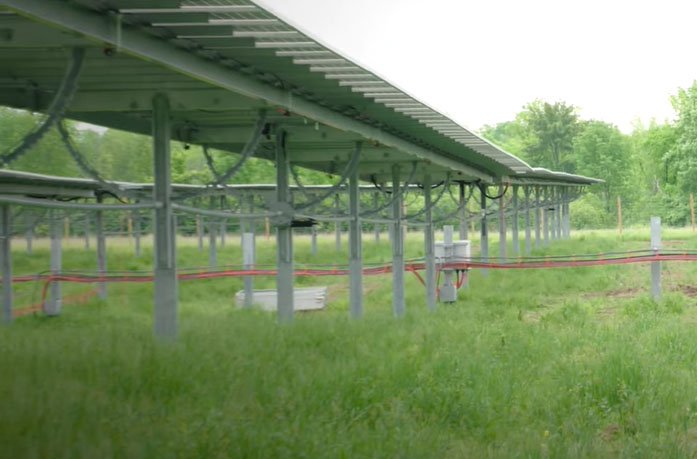
Is it safe to live next to a solar farm?
Living next to a solar farm is generally safe, and several factors contribute to the minimal risks associated with these installations. Here are some considerations regarding the safety of living near a solar farm:
- Low Environmental Impact: Solar farms have a low environmental impact compared to many other energy generation methods. They produce electricity without emitting air pollutants or greenhouse gases, contributing to improved air quality and reduced environmental harm.
- Noise Levels: Solar panels generate electricity silently, and solar farms do not produce noise pollution. Unlike some traditional power plants, they have minimal impact on the acoustic environment.
- Electromagnetic Fields (EMFs): Solar panels and the associated infrastructure produce extremely low-frequency electromagnetic fields (EMFs). Studies have shown that these EMF levels are well below established safety limits, posing no known health risks to nearby residents.
- Chemical Exposure: The materials used in solar panels are generally inert and pose low risks to human health. Solar panels are made from materials such as silicon, glass, and aluminium, and they do not release harmful chemicals during normal operation.
- Security Measures: Solar farms have security measures to prevent unauthorized access and ensure the safety of the facility. Fencing, surveillance, and other security measures are in place to protect both the equipment and the surrounding community.
- Land Use and Aesthetics: Solar farms are visually unobtrusive and often occupy large open spaces. While opinions about the aesthetics may vary, they generally have a minimal impact on the landscape.
- Fire Safety: The risk of fire associated with solar panels is low. Solar panels are fire-resistant, and incidents of solar panel fires are rare. Additionally, the owners equip solar farms with fire safety measures, and local fire departments know how to handle solar-related emergencies.
- Property Values: Research has shown that living near a solar farm does not necessarily harm property values. In some cases, property values may even increase as solar farms contribute to local sustainability and reduce energy costs.
Understanding Safety Measures and Community Engagement
It’s important to note that the safety and impact of living near a solar farm can vary based on specific project characteristics, local regulations, and community engagement. Besides, developers and regulatory authorities typically conduct thorough assessments to ensure that solar farms meet safety and environmental standards.
Before the construction of a solar farm, residents are often informed about the project, and public hearings may be held to address any concerns. Then, local authorities typically regulate solar farm installations to ensure compliance with safety and environmental standards. So, if you have specific concerns, it may be helpful to engage with local authorities or the project developers to gather information and address any questions you may have.
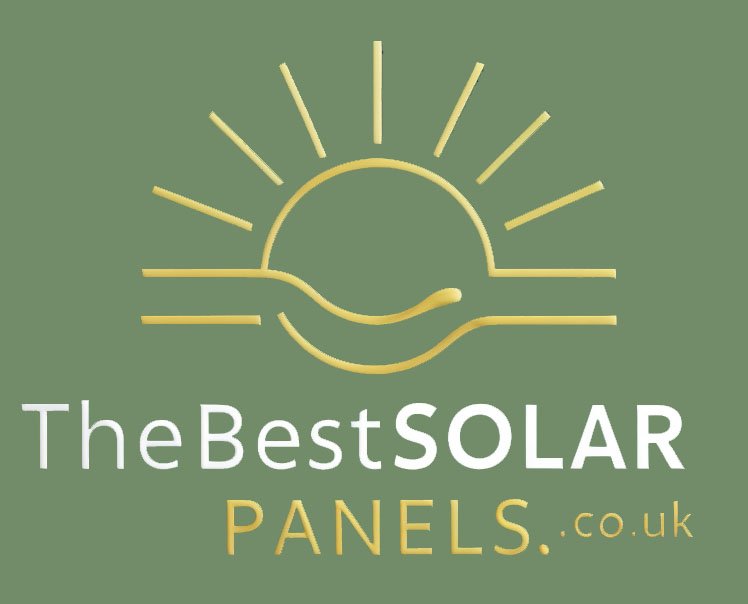


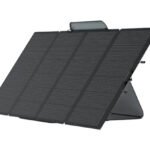
Leave a Reply